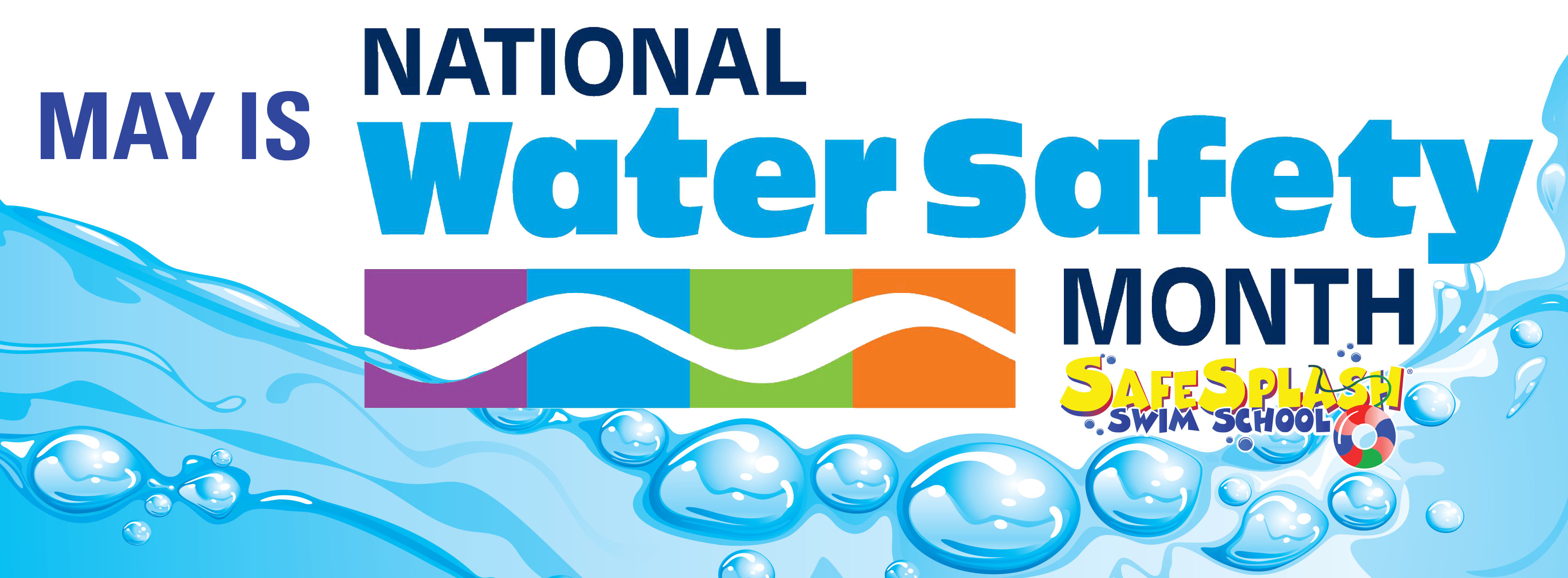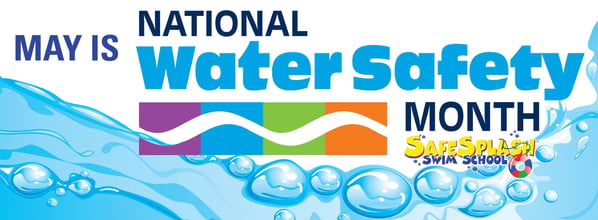
Did you know May is National Water Safety Month?
The annual awareness campaign is coordinated by The
Association of Pool & Spa Professionals with support from
the National Recreations & Park Association,
the American Red Cross and the World Waterpark Association.
Summer is right around the corner and along with sun and fun my favorite season is usually accompanied with swimming and watersports. It's imporatnt for both children and adults to learn water safety skills and even more important, to continue to practice those skills more often than just a few times throughout the summer.
One rule of thumb in Kinesiology (the study of body and movement) is that it takes three weeks to learn a new skill and three days to forget that skill. If a student practices once every week it is like taking two steps forward and one step back. Yes, the student will learn and retain some muscle memory, but they need to continue practicing through the week to retain the most information for quick progression.
This is also very true for young children or children with special needs that need to acclimate to the new environment. When it comes to swim lessons for children, I recommend attending multiple days a week for one or two months and then scaling down once the student has the fundamentals down such as stream lining and then rolling to their back.
As with anything, practice makes perfect! Whether your child is a beginner in the Parent- N-Me class or advancing through to Swim Team Conditioning taking the fist step is the most important - learning water safety!
Water Safety Tips Courtesy from the International Swimming Hall of Fame (ISHOF)
- Teach children water safety and swimming skills as early as possible.
- Always brief babysitters on water safety, emphasizing the need for constant supervision.
- Appoint a designated watcher to monitor children during social gatherings at or near pools.
- Equip doors and windows that exit to a pool area with alarms.
- Install a poolside phone, referable a cordless model, with emergency numbers programmed into speed-dial.
- Post CPR instructions and learn the procedures.
- Keep rescue equipment poolside. Don’t wait for the paramedics to arrive because you will lose valuable lifesaving seconds. Fort to six minutes without oxygen can cause permanent brain damage or death.
- Keep a first aid kit at poolside.
- Install four-sided isolation fencing, at least five feet high, equipped with self-closing and selflatching gates, that completely surrounds the pool and prevents direct access from the house and yard.
- Maintain constant visual contact with children in a pool or pool area. If a child is missing, check the pool first; seconds count in preventing death or disability.
- Don’t use flotation devices as a substitute for supervision. Never allow a young child in a pool without an adult.
- Don’t leave objects such as toys that might attract a child in the pool and pool area.
- Never prop the gate to a pool area open.
- Don’t rely on swimming lessons, life preservers or other equipment to make a child “water safe.”
- Never assume someone else is watching a child in a pool area.
- Don’t leave chairs or other items of furniture where a child could use them to climb into a fenced pool area.
- Don’t think you’ll hear a child who’s in trouble in the water; child drowning is a silent death, with no splashing to alert anyone that the child is in trouble.
Take The Safe Swimmers Pledge with your kids, snap a pic of your little safe swimmer and share on our Facebook with the hashtag #IAmSafeSplash!



